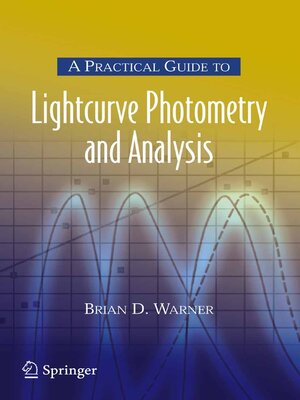
Sign up to save your library
With an OverDrive account, you can save your favorite libraries for at-a-glance information about availability. Find out more about OverDrive accounts.
Find this title in Libby, the library reading app by OverDrive.



Search for a digital library with this title
Title found at these libraries:
| Loading... |
It is a pleasure and an honor to offer a few words of forward to Brian Warner's guide to photometry. In his preface, he makes a considerable point about amateurs and professionals, and those who dare or deign to step across the line supposedly dividing the two. Here I would like to make a few observations about the two monikers, and suggest that there is not, or at least should not be, a distinction - tween "amateur" and "professional. " In preparing these remarks I referred to W- ster's New Collegiate Dictionary (1960 edition; not so new anymore, but that was when my collegiate experience began): am´a·teur, n. [F. , fr. L. amator lover, fr. amare to love. ] 1. One who cultivates a particular pursuit, study, or science, from taste, without pursuing it professionally; also, a dabbler. 2. In sports and esp. athletics, one who is not rated as a professional. Well. . . a "dabbler" eh? "not rated as a professional"? No wonder we have an identity problem here. Somehow in my youth as an amateur astronomer I missed this connotation of the term. To me, the meaning of the term amateur was do- nated by its root, "to love," that is, one who does what he does out of love of the subject, not for remuneration (to the extent one can get away with that).






